A warm mug of rich, subtly smoky broth scented with herbs is delicious and a great bonus during hunting season. I think my venison bone broth recipe is the best you'll ever have, but takes a little more work than typical bone broth or deer stock as I use the lower portion of the legs. Read on and I'll explain how to make it, and what you can do with it.
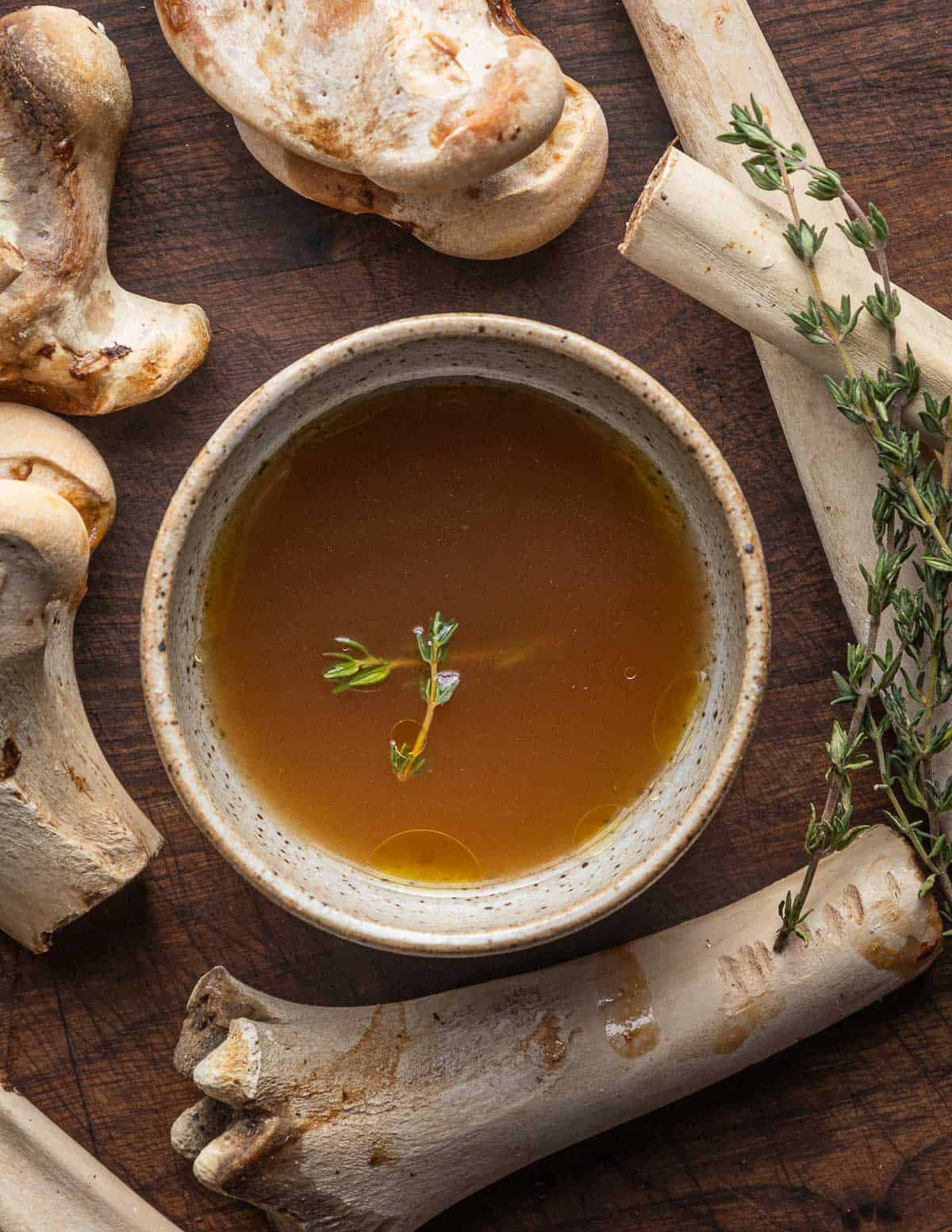
Meat Broth vs Bone Broth
The biggest difference between meat stock and bone broth is that bone broth should gel and solidify when chilled, and it's typically cooked for at least 12-24 hours.
Another difference is that stock technically doesn't include salt. When stock is seasoned with salt to taste, it becomes broth. This can be confusing, since boxes of meat stock and broth at a grocery store will both include salt as a preservative.

Bone broth is also complete protein, containing all 22 essential amino acids your body needs. It's essentially a steak in a glass. Commercial meat stocks can be made from concentrates and will not have the same nutrient profile.
Safety (Bones You Can Use)
Some people in areas with Chronic Wasting Disease might wonder if deer bone broth is safe.
To be clear: it is perfectly safe to make bone broth from deer. However, out of an abundance of caution, the spine isn't used. If you use farmed venison, or you've had your deer tested for CWD you could use the spine.
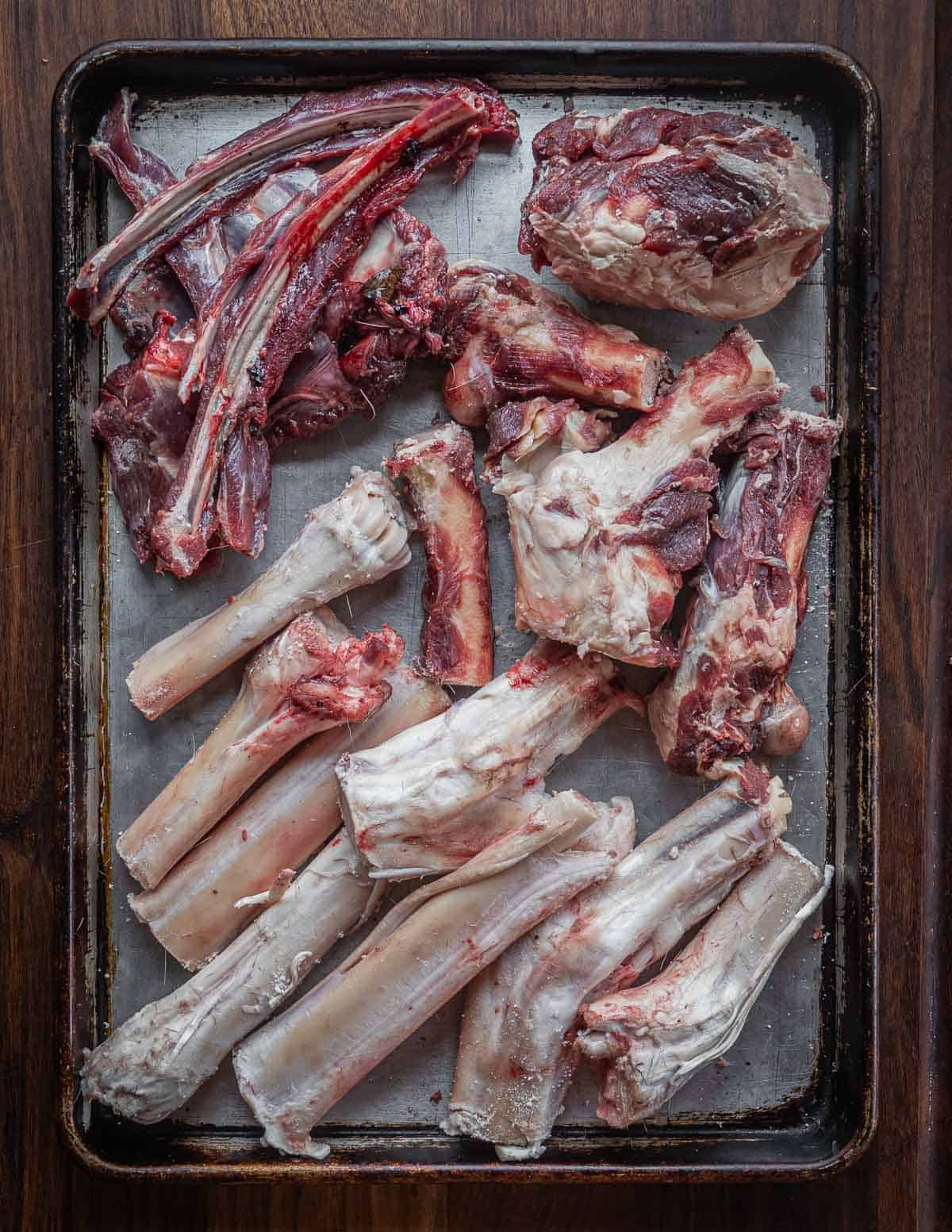
My good friend Hank Shaw has the best article on CWD I've read if you need a refresher.
How to Make Venison Bone Broth
The most important thing is trimming the venison feet. First the legs are cut with a saw at the knee joint (technically the ankle).
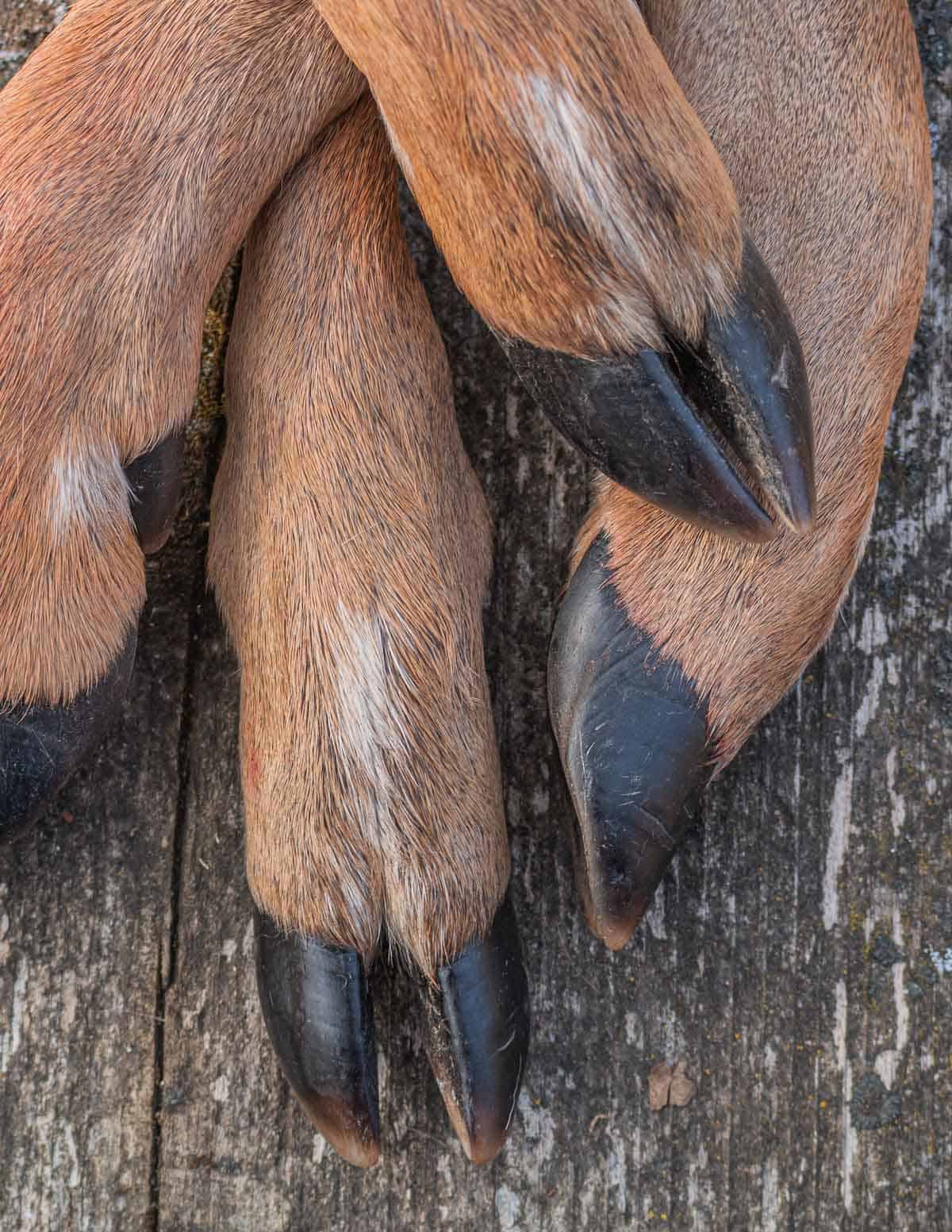
Next the fur and skin is removed, and the hoof portion is cut off with a saw, or it can be washed, scrubbed, and trimmed and cooked with the bones for extra collagen.

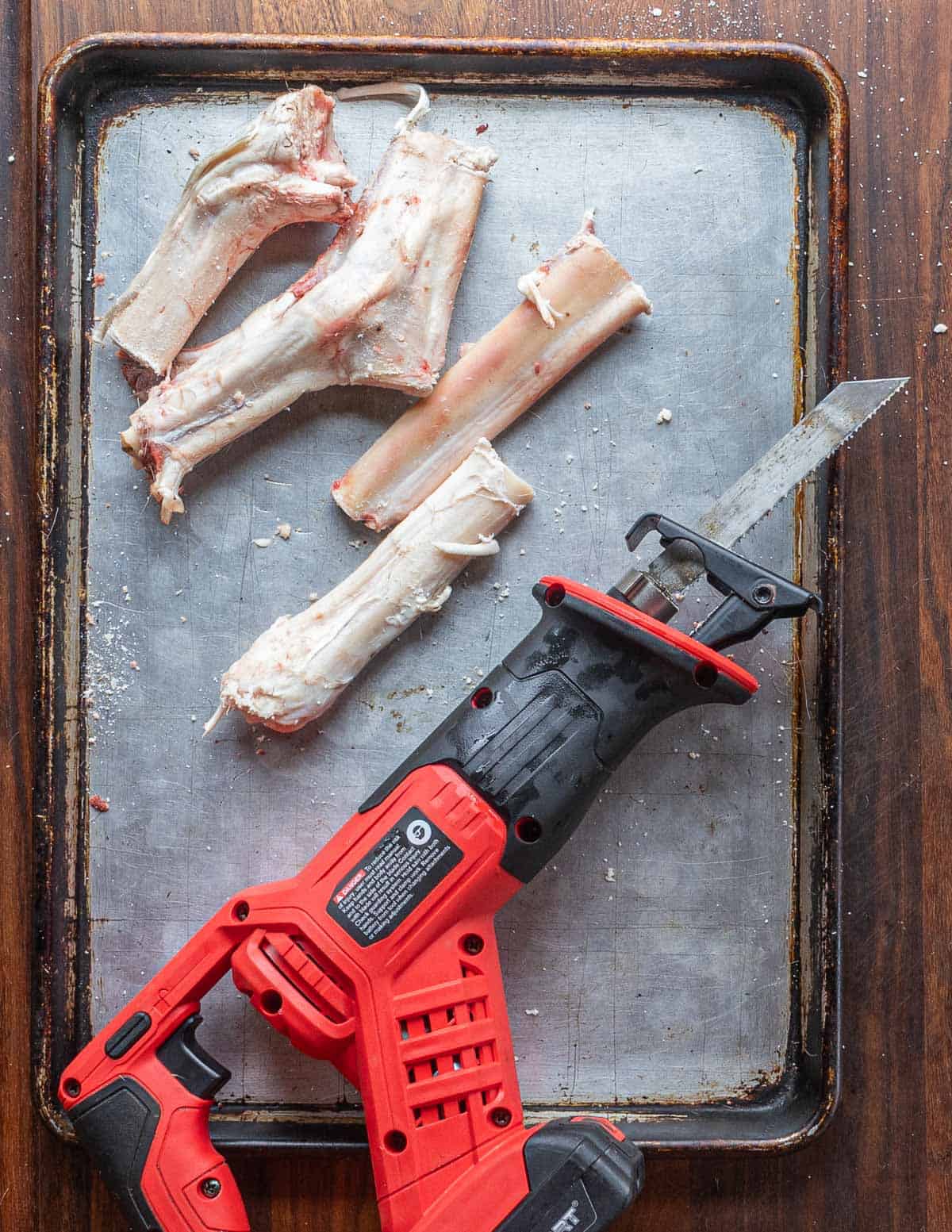

After the bones are cut into pieces that will fit in a slow cooker they're smoked for a couple hours. You can also roast them in the oven.
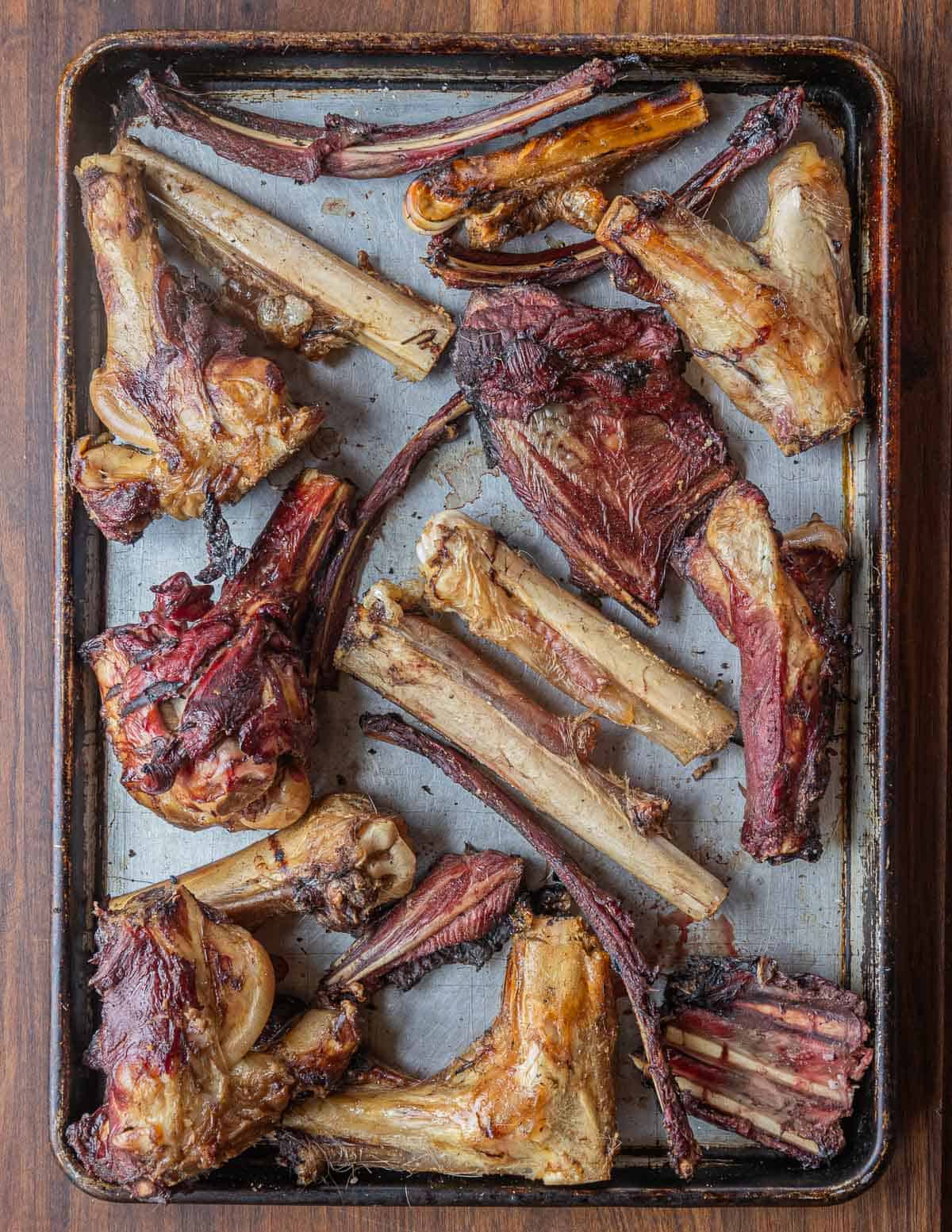
Next the bones are put into a slow cooker with celery, onion, a bay leaf or other herbs and water and cooked for 12-24 hours. At the half way point, add extra water to account for water lost through evaporation.
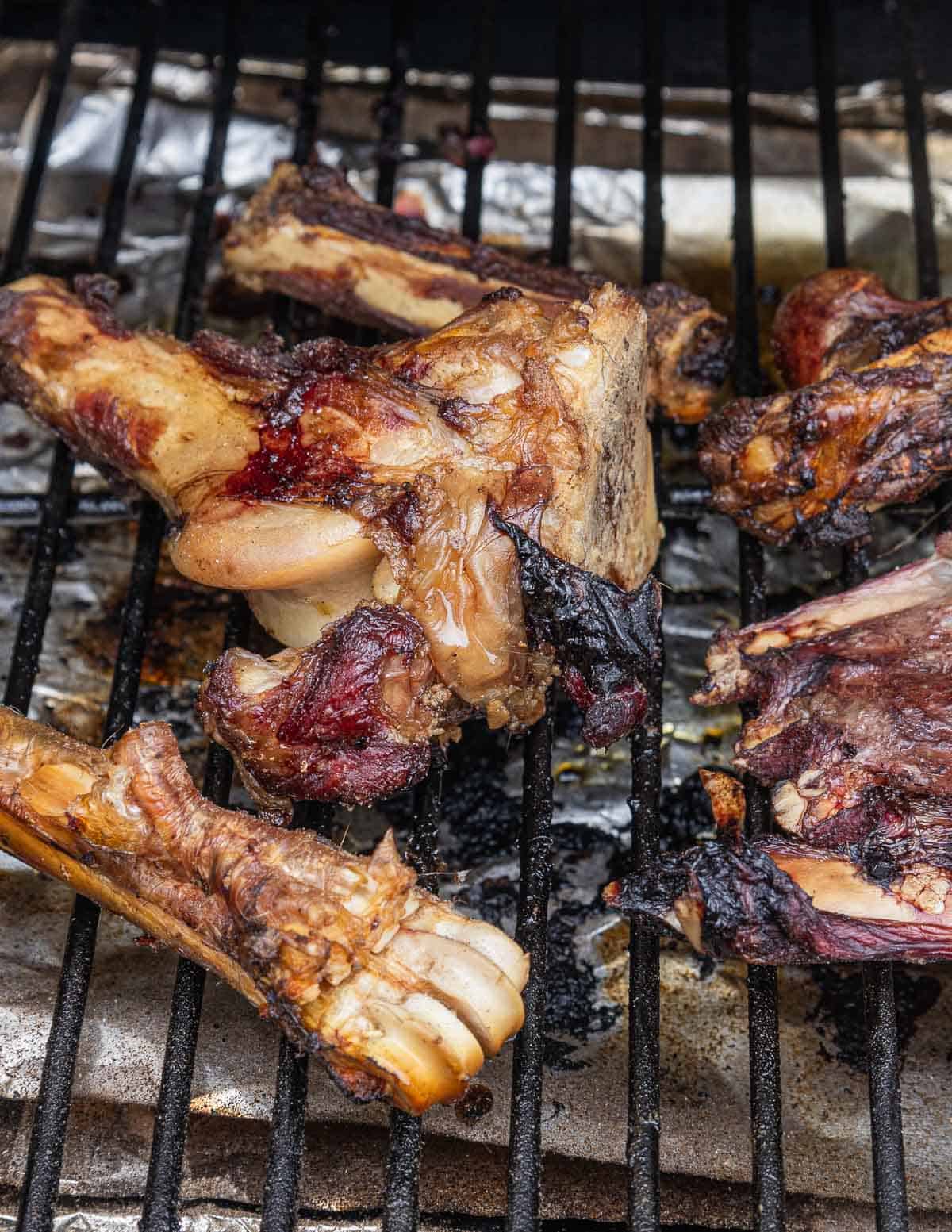
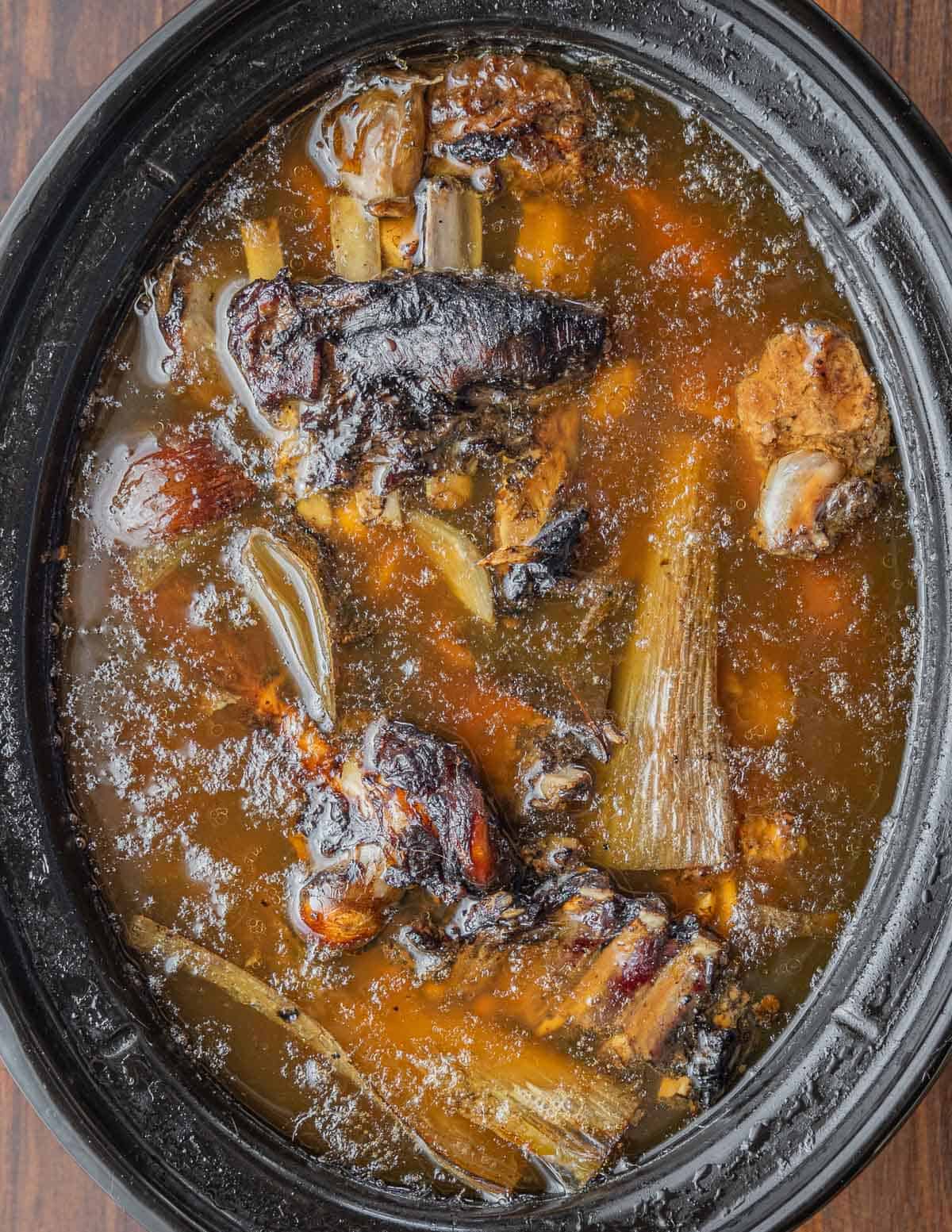
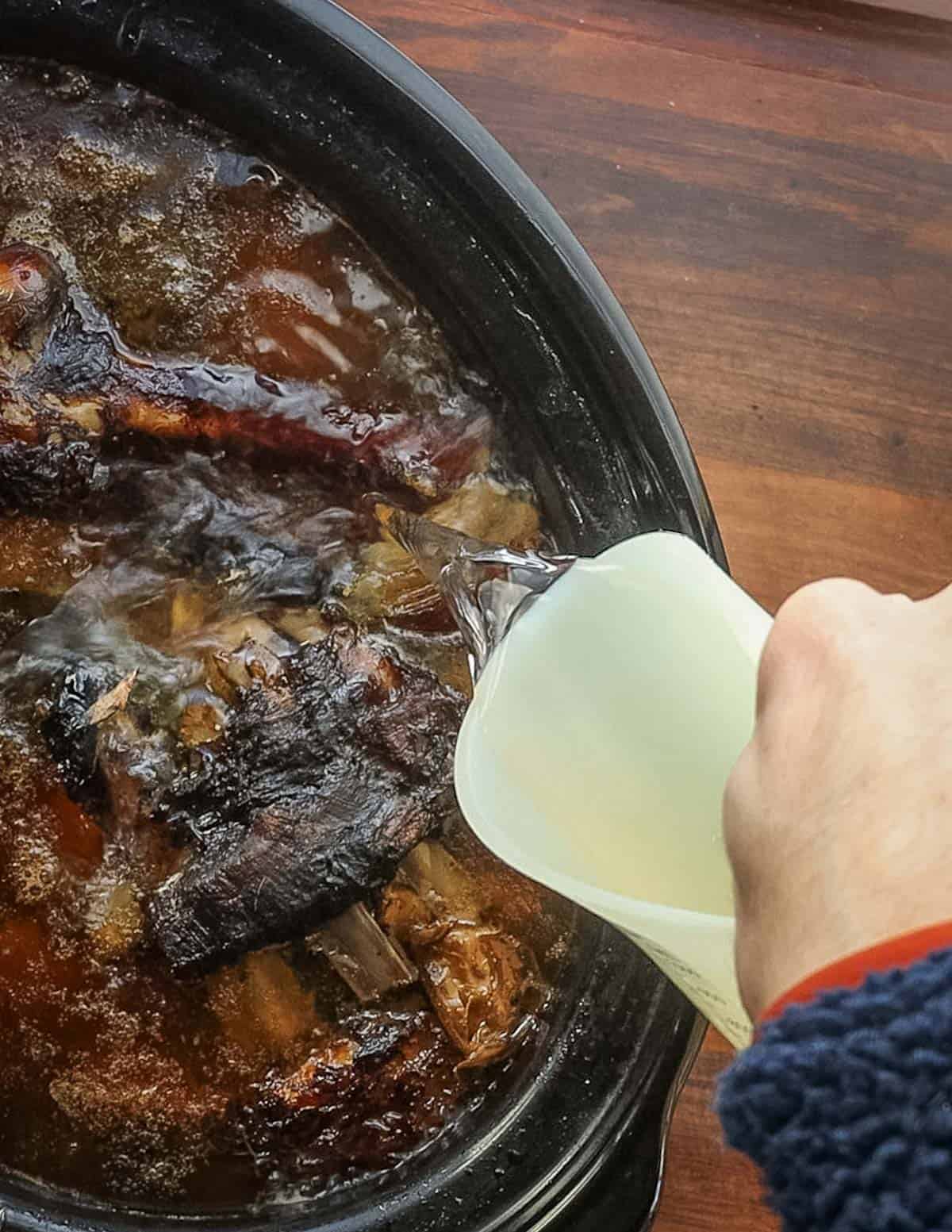
At the 12 hour mark I like to test the set of the stock, but it's optional. To do it, take a few spoonfuls of stock and put it in a metal bowl set in ice water. After 20 minutes, it should be jellied.
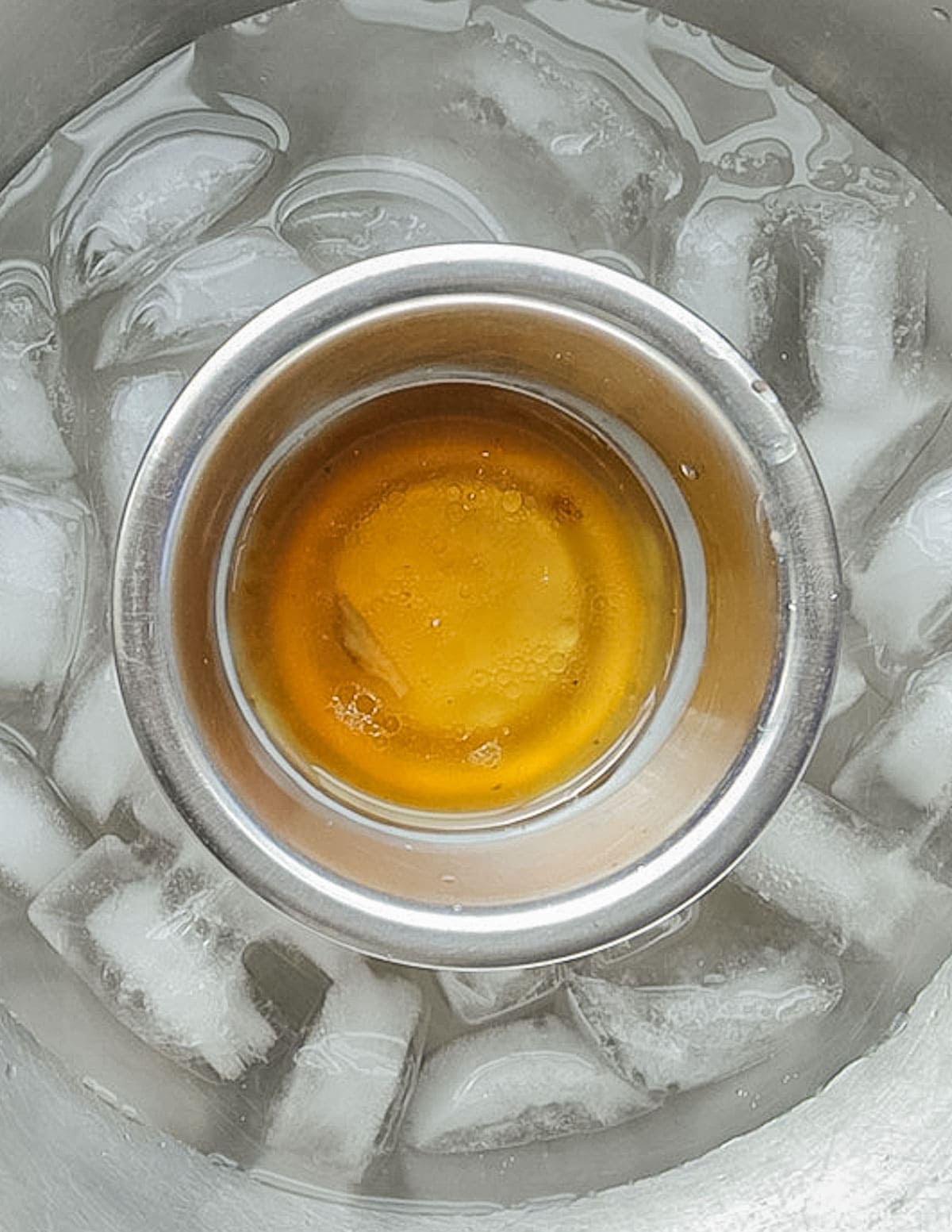

When you're ready to finish, remove the bones and strain the stock through cheesecloth. Season the stock with salt and chill it. Remove the fat from the top and discard, then warm it up, portion into containers and refrigerate, can or freeze it.
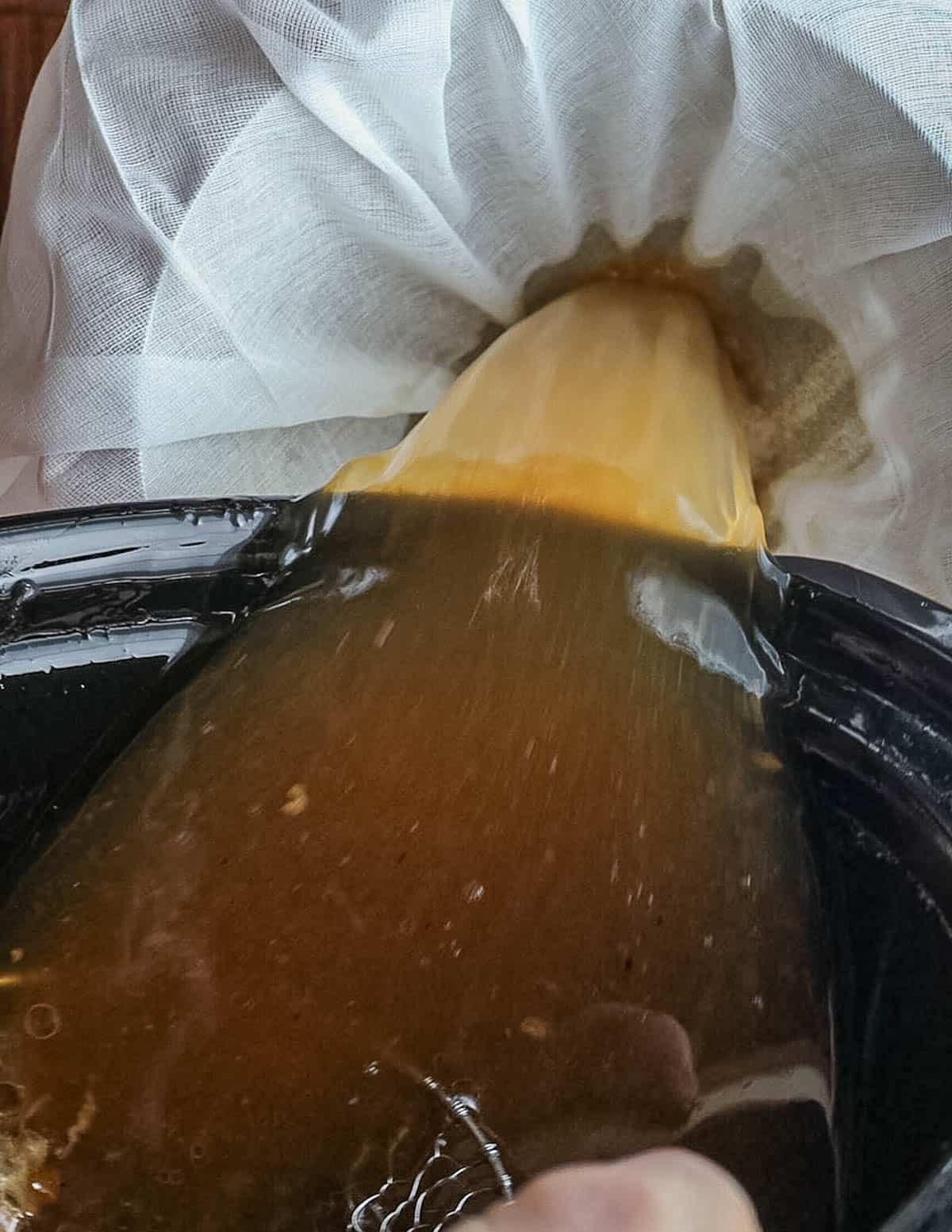
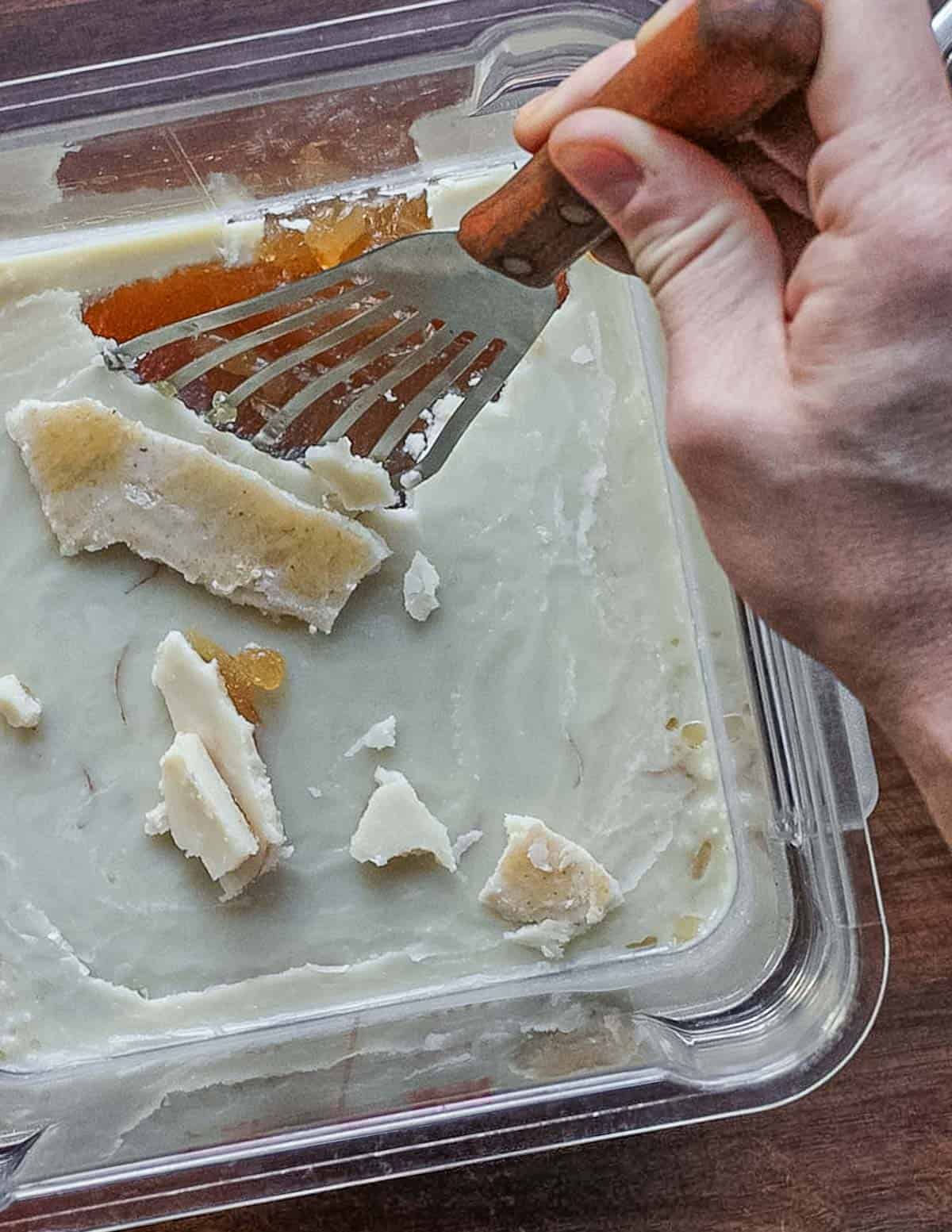

Remoulage Stock
A cornerstone of classic French cuisine, a remoulage stock is made by taking bones that have been boiled once, and cooking them a second time, often for a longer period of time than the first stock.

The remoulage technique is often used for very large bones like veal knuckles and large beef bones. Unlike bone broth, It may include tomato and wine to help draw out the collagen. I illustrate the method in the video at the end of this post.
When made correctly, it will gel when cooled just like bone broth and can make a great soup base.
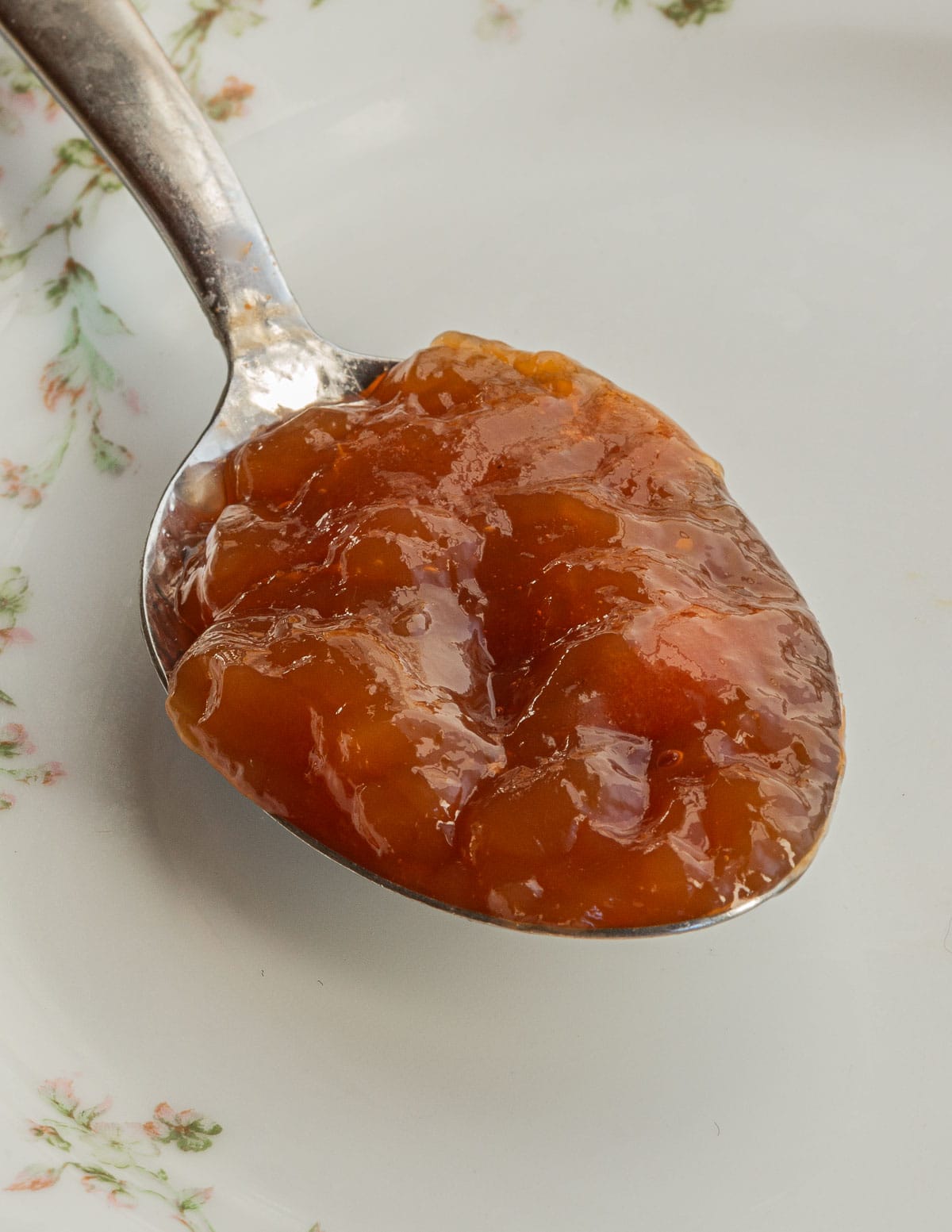
Tips
- The broth can be used in cooking where you might use demi glace. In the video I demonstrate how to use it to make brandy peppercorn sauce with brick cap mushrooms.
- Make sure to season your stock with salt to taste before storing. Salt it an important preservative and will enhance the shelf life of your bone broth.
- Venison bone broth makes a delicious healthy drink. Warm it up with a sprig of rosemary, thyme or sage and a dash of fresh lemon juice and sip it from a mug.
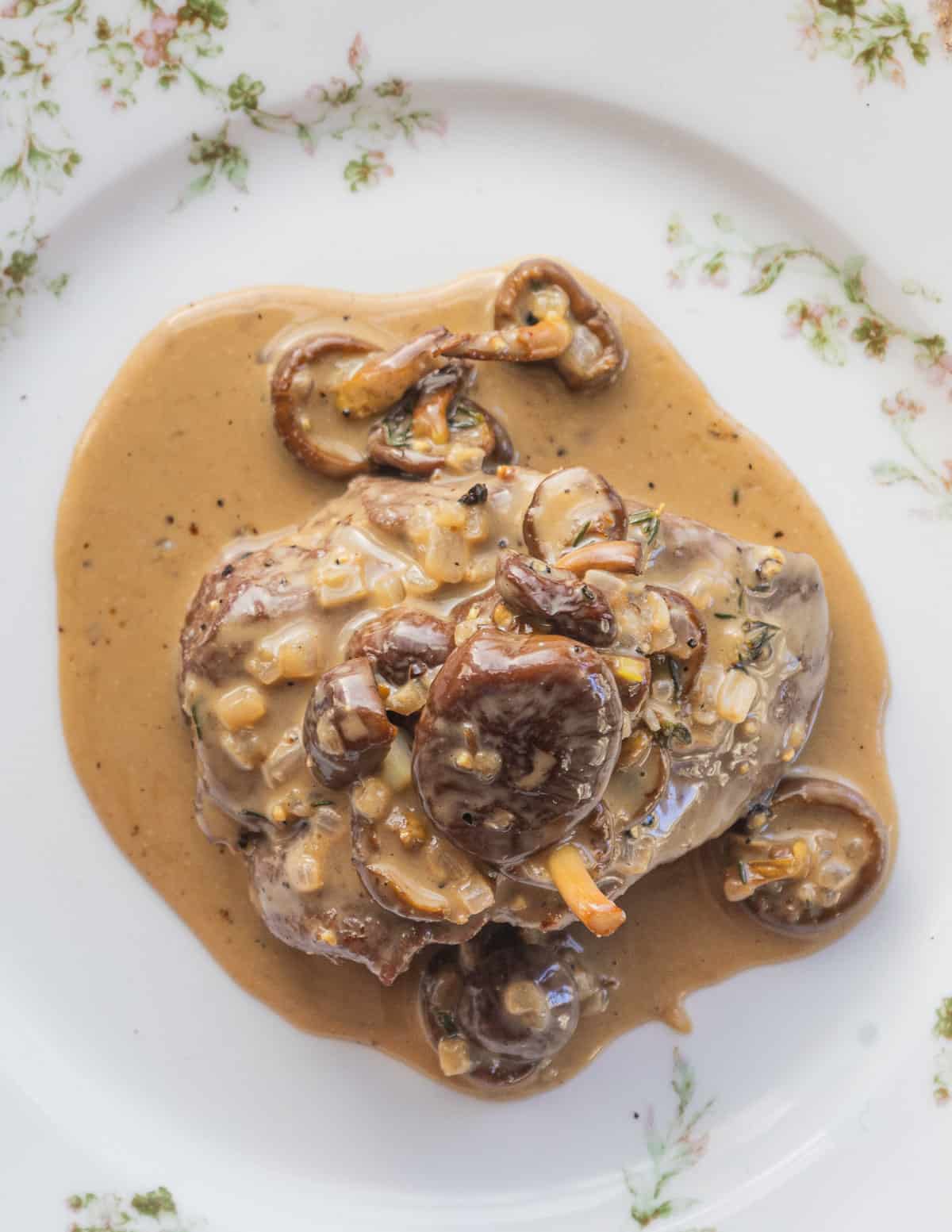
More Venison
- Venison Liver Pate
- Smoked Venison Shanks
- Homeamde Deer Bacon
- All Venison Recipes
Smoked Venison Bone Broth
Equipment
- 1 Large crock pot or slow cooker
- 1 Smoker (optional)
- 1 Strainer
- 1 large mixing bowl
- 1 Reciprocating saw
Ingredients
Bone Broth
- 5 lbs Venison bones Ideally including 4 venison feet/shins, leg bones, and a few ribs.
- 1.5 gallons cold water
- 1 large white onion halved
- 2 ribs celery roughly chopped
- 3 cloves garlic whole
- 4 teaspoons kosher salt to taste
- 1-2 dried bay leaves
Serving
- Sprigs of fresh thyme, sage, or rosemary
- 1 whole lemon, cut into wedges
- Extra virgin olive oil to garnish, optional
Optional Remoulage
- 1 cup tomato sauce
- 1 cup dry red wine
- 1.5 gallons water
- 1 large white onion
- 3 cloves garlic
Instructions
Prep and cut the bones
- Cut the venison leg bones off at the knee. Trim them with a knife and remove the skin, then cut into ⅓rd's using the saw.
- Cut the other leg bones in half using the saw.
Smoke or roast the bones
- Preheat an oven or smoker to 300 F. Cook the bones for 1 hour, or until browned and completely cooked.
Make the stock
- Put the bones into a slow cooker with the remaining ingredients and cook on low for 12-24 hours. Make sure all the bones are covered with water.
- Alternately, you can use a large pot and cook the broth covered at a bare simmer.
- If you cook the bones for 24 hours, add water to bring the pot back to its original volume at the half way point. The longer you cook it, the stronger the natural gelatin will be.
- Remove the bones and add salt until it tastes good to you. !/2 teaspoon of salt per quart is good for drinking. If you want to cook with it, add half the salt.
- Strain the broth through cheesecloth and chill.
- Remove the fat and discard.
- Warm the broth, transfer to containers to put in the fridge or freezer. It will last in the fridge for up to a week.
Serving
- Put a small sprig of thyme, rosemary or sage in a mug for each person.
- Warm up the broth, double check the seasoning, add a splash of fresh lemon juice and a thread of olive oil if using, and serve.
Optional Remoulage
- Put the cooked bones back into the slow cooker with the remoulage ingredients.
- Cook on low heat for 24 hours, then strain and proceed as for the regular bone broth.
Video
Notes
- You can can venison bone broth if you have a pressure cooker. It can also be frozen or stored in the fridge for up to a week.
- Large, two-gallon freezer bags work well for storing bones until you need them.

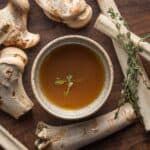
Don Blackert
Jeesh Alan, I had things to do tonight, but your post and the associated links were so interesting that I didn't get anything else done tonight. We are polluted with deer here in southwest Pennsylvania, so we basically legally harvest as many as we can use, and I'm a big fan of letting them hang for a couple weeks at 35 degrees (easily done with an air typical conditioner and a "cool bot" - no affiliation, but they work great). Anyway, I meticulously butcher several deer a year and I can tell you that my dogs will be very disappointed, but I'm looking forward to saving the shanks and other tough cuts and making smoked bone broth and smoked shank, and even giving venison bacon a shot. Great post. I copied and pasted this and the links to my "Alan Bergo" file. Thanks.
BTW - we had a back-and-forth conversation a couple years ago following your post about eating turtle eggs, and I described my best methods for cleaning (butchering) snapping turtles. You said you would save it for future reference. I'm wondering if you have ever had an opportunity to deal with a snapper since our conversation.
Alan Bergo
Hey Don. Thanks! I had a snapper in my posession and my ex girlfriend set it free, so no, I haven't. I'm here if you have any other questions though.
Don Blackert
Wow, a girlfriend like that deserves to be an "ex". Who knows what she would have done next, maybe dump out your beer or something!!
I was tagged out and done butchering for the year before your post with the bone broth recipes, so I thought I'd have to wait until next season to try it, but luckily the neighbor kid brought me some hind leg bones with plenty of meat left on them. They thought they were bringing them for my dog. Instead after removing the meat the bones are headed for the smoker then to be used for your bone broth.
I do a variety of wild mushrooms sautéed with lots of garlic and some herbs and things before mixing about 50/50 with wild rice, some crushed almonds and roasted crumbled chestnuts that is always big hit for holidays. I'm going to try finishing the rice by simmering in the venison bone broth before mixing in the other ingredients. Any suggestions?
Alan Bergo
Oh she just had a big heart.
As for the bone broth, I would not use it to cook rice. There's so much collagen that it could get sticky and weird. You can sure use it, but you'd want to cut it by half with water or another stock that isn't so rich. The second wash of the bones/remoulage would work though as it's lighter. What I would do is pass out small cups of perfectly seasoned bone broth with a little sprig of rosemary, fresh pepper and a drizzle of olive oil is a big hit when I serve it to my family at the holidays.
phil devries
I enjoyed these recipes and technique for making venison broth and remoulage. Nice touch using the hooves for more collagen. Venison legs are very good indeed. Some years ago I made venison "osso buco" that was delicious. I'm imagining venison "osso buco" with a deeply flavored venison stock you are describing here. Finally, I particularly enjoyed reading this post as I'm in the middle of doing the same with poultry and rabbit bones and carcasses. Thanks for posting.
Phil
Alan Bergo
Thanks Phil. I made sure to cut some venison shanks for osso bucco this year.